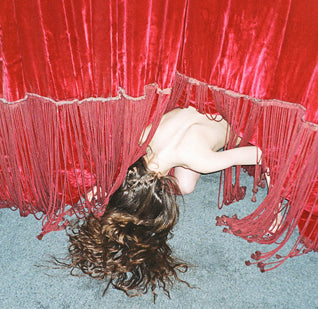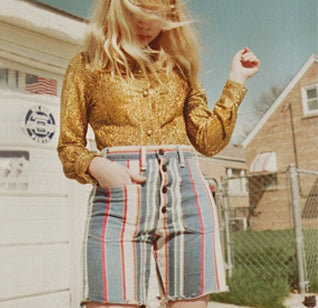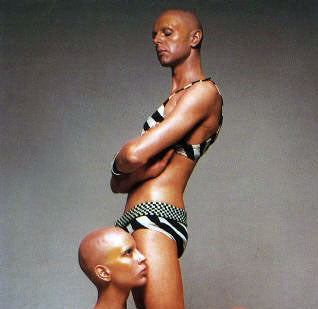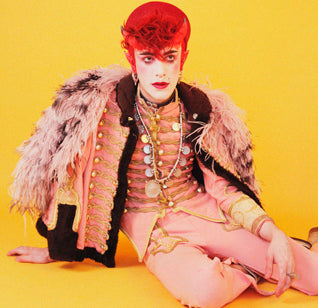IT'S PERSONAL
An insider's guide to collecting art
by Claire Hazelton
I wouldn't call myself an art collector, but I have amassed a small selection of artworks over the years. But the title of ‘art collector’ is usually reserved for those with endlessly deep pockets. The label implies value, money, exclusivity and success rather than a simple appreciation of art. The common perception of collectors is skewed by familiarity with figures such as Charles Saatchi. In reality there are plenty of collectors who do not fit the stereotype and have started collections with only small budgets but plenty of genuine interest.
Art collecting is a lot more accessible than its public image might suggest. It can be a hobby – and sometimes even a career – that can start from next-to-nothing.
The first artwork I bought cost me a cup of coffee and a blueberry muffin. I was with my friend, a talented illustrator, in a café in London and she showed me a few of her sketches. I could see my friend and her potential in each piece, so we agreed that she would give me a sketch in exchange for coffee and cake. Her drawing has gained monetary value as her career has taken off, and now takes center stage among the other artworks I have collected since. Collections can be born from unusual or coincidental experiences, like mine, rather than from a determination to start an art collection.
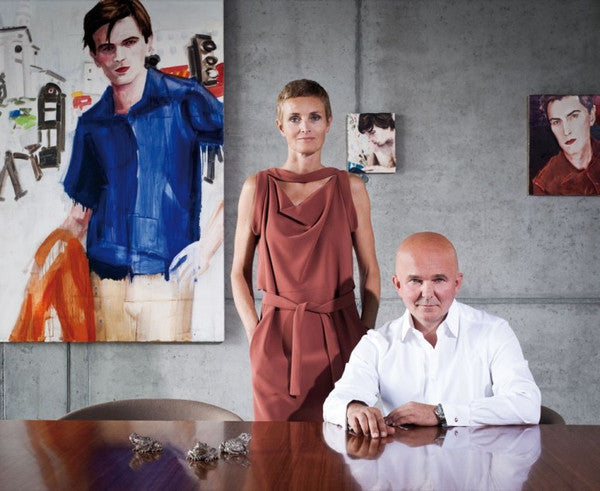
Art collecting couple: Karen and Christian Boros
When it comes to making a purchase, the only sensible rule is to buy art you like. Trends and famous names are not reason enough to invest. Art, like music, is personal – a collection, like a playlist, is shaped by individual taste. Charlotte and Bill Ford, two avid experienced collectors advise similarly: “we would suggest first time collectors to not be afraid, develop your own passion and direction, worry less about what others are doing, see a lot and get to that voice within that says “That’s the one.”
Dorothy and Herbert Vogel lived a normal life. Working as a librarian and a postal clerk, they were described as “proletarian art collectors” by ARTINFO because they invested their modest earnings in art. Squeezing over 4,000 pieces by artists such as Pablo Picasso and John Chamberlain - and cats named Renoir, Corot and Manet - into their small, New York apartment, the couple’s story is so inspiring that it has been made into a documentary, Herb and Dorothy (2009), and a sequel, Herb and Dorothy 50x50 (2013) .

Collector, Richard Harris
Starting the collection in 1962, the artworks the Vogels bought were not popular at the time, but are now worth millions. Rather than following the word of critics or art ‘connoisseurs’ they trusted their own judgment. Collecting works that resonate on a personal level can never disappoint; whereas, collecting according to trends and market value is risky. After all, fashion is ever changing.
As Dorothy explains, the aim was never to find the next big name: “I never thought that the artists we collected in those days would become so famous. That wasn’t a goal for us. We bought [art] because we liked the work and when [the artists we bought] get recognition, we sort of share their joy.” Although it could be said that the Vogels took a great risk by investing in artworks that had little value, for them the purpose was not to make money. They donated their collection, rather than selling it, to The National Gallery of Art.
Like the Vogels, new collectors should be bold - go against the grain and take risks. Buying the same work as everyone else will leave you with a collection that is recognizable but mundane. The Vogels became successful, accidentally. Although their success is rare, any art enthusiast has the potential to achieve the same. It’s important to have confidence in your own taste and if your budget is tight, the work of up and coming artists can be a good place to start.
The aim was never to find the next big name: “I never thought that the artists we collected in those days would become so famous.”
Buying work from an emerging artist is an investment in their future, not just a potential asset for yours. Remember, as collector Valeria Napoleone writes, “It’s impossible to build a collection in a vacuum. In fact many people are involved – the artists and gallerists of course, but also friends and acquaintances”. These relationships can be fostered online, through art-specific forums found on social networks, such as Linkedin.
Talk to small galleries and speak to their curators for advice. If they recommend younger artists, be open minded – just because they are at the beginning of their career doesn’t mean their work won’t gather momentum. Until just two years ago, 27-year-old artist Oscar Murillo was selling his huge works for less than $3,000. This June, his price had rocketed and his abstract canvases sold for $389,199 at Christie’s auction house – confirming his successful status. By September, in New York, his work was selling for double its highest estimated price.

Herbert and Dorothy Vogel
Ernesto Cánovas is another emerging artist on the rise. Discovered by Kids of Dada, his talent was soon realized by prestigious Mayfair Gallery, Halycon and the value of his work will certainly benefit from being grouped with the gallery’s renowned collection of artists. The fact Cánovas was picked up by Kids of Dada indicates that online galleries can also be trustworthy sources to discover talent from around the world.
The stereotypical image of the art collector – with money spilling from their pockets and a Warhol on the wall – should be dispelled. Buying art should be motivated by personal taste. Whatever your price bracket, put your trust in emerging artists – everyone’s got to start somewhere.
Start browsing for art at Kids of Dada. Need help with your collection? Contact us on info@kidsofdada.com












